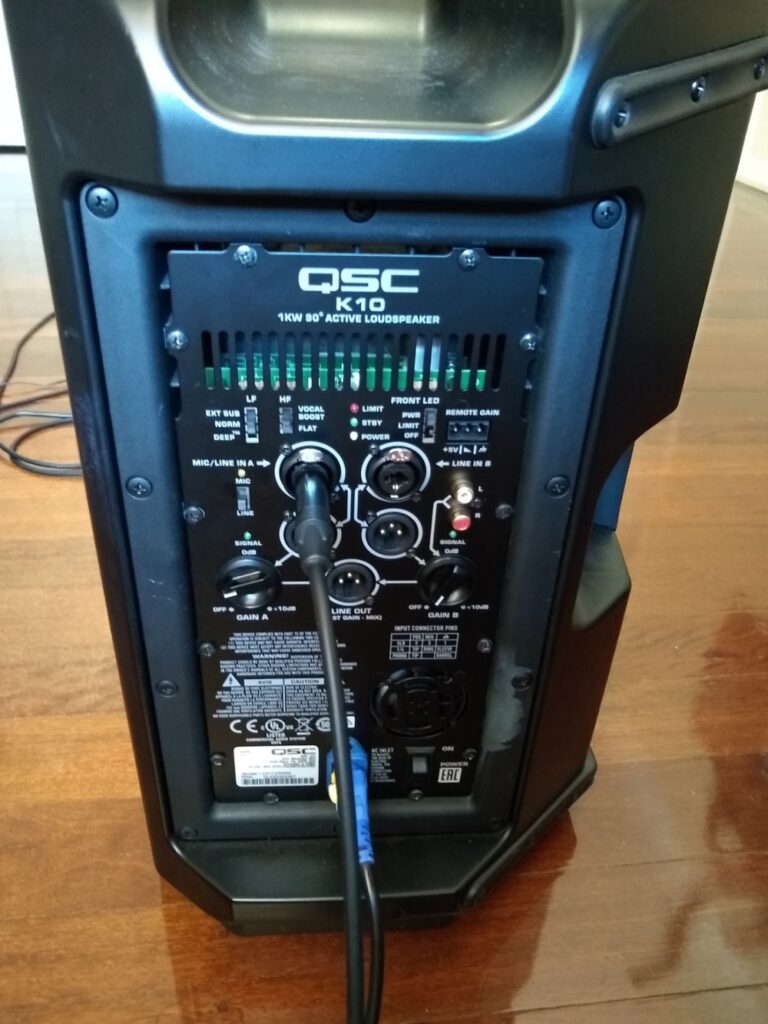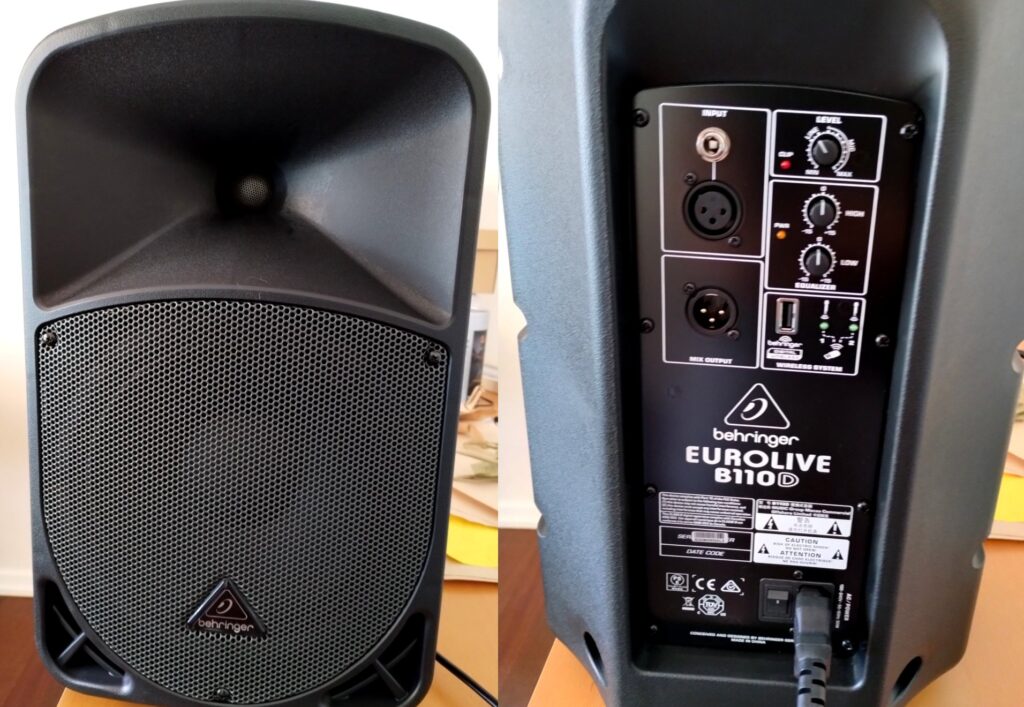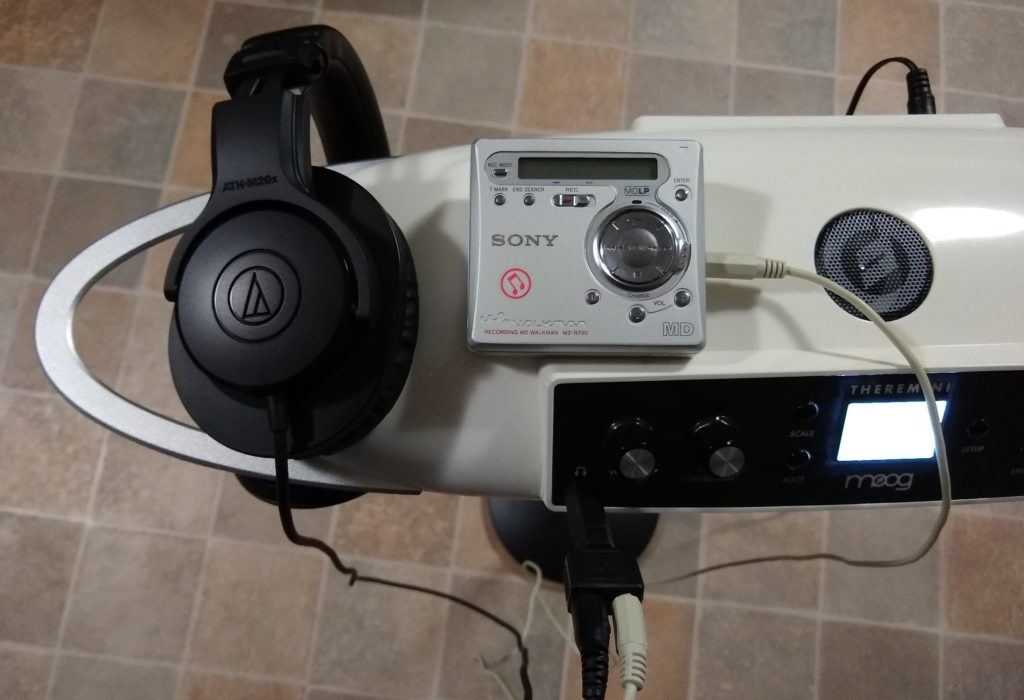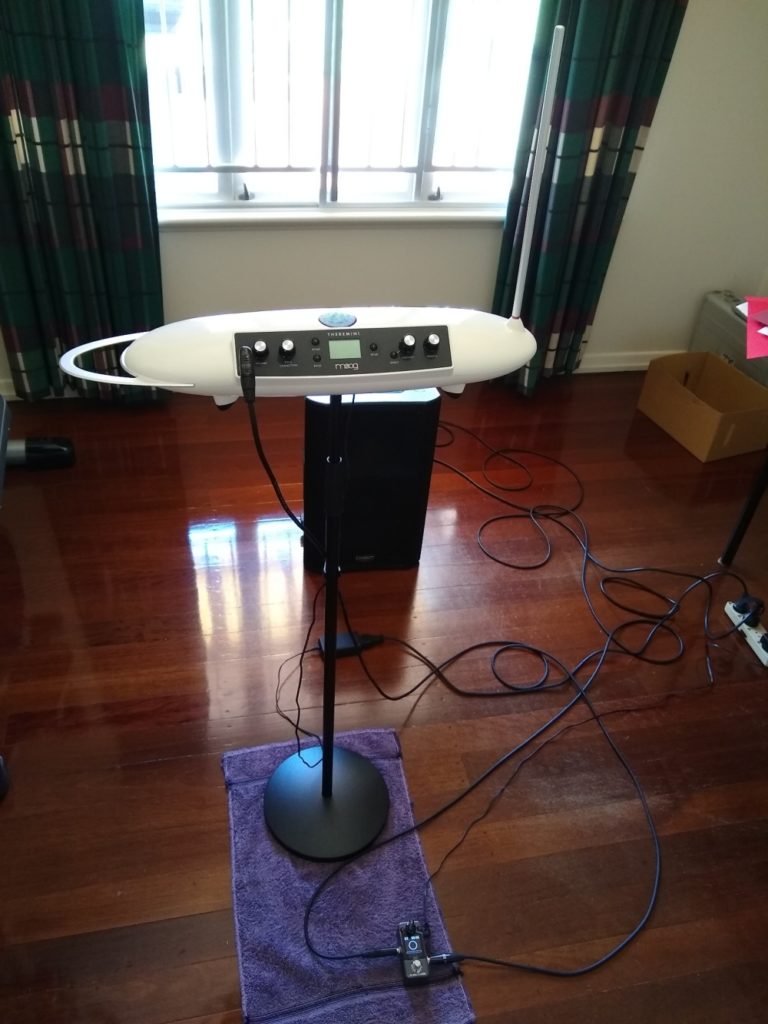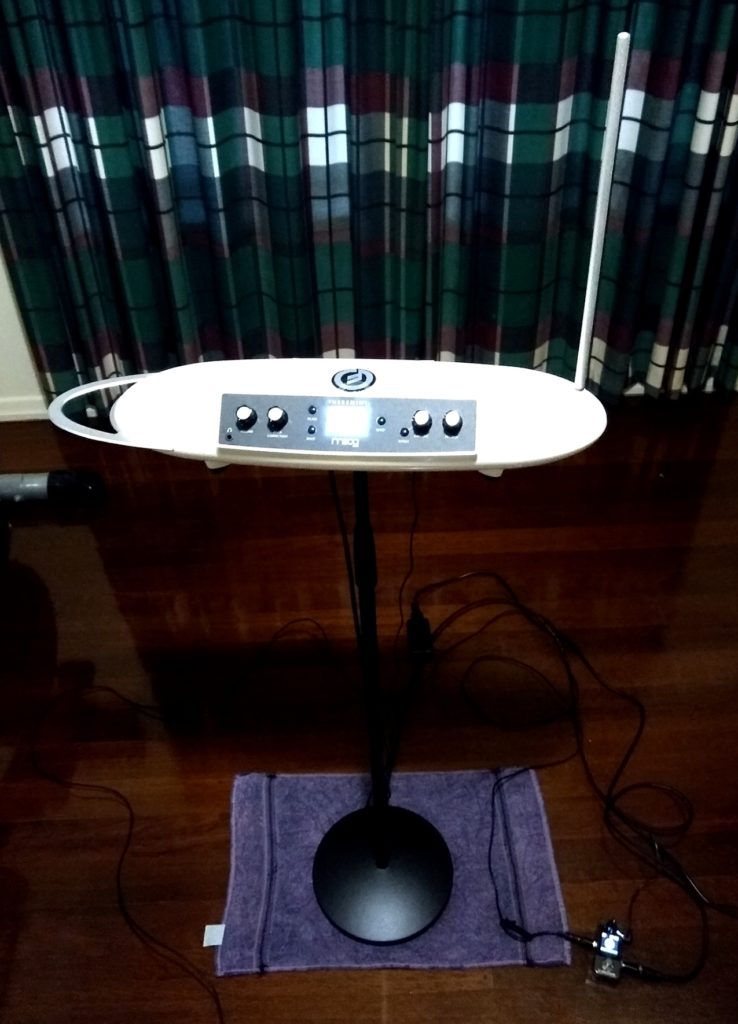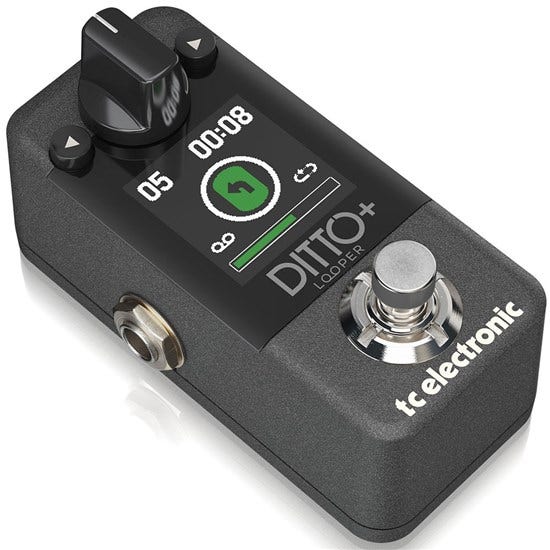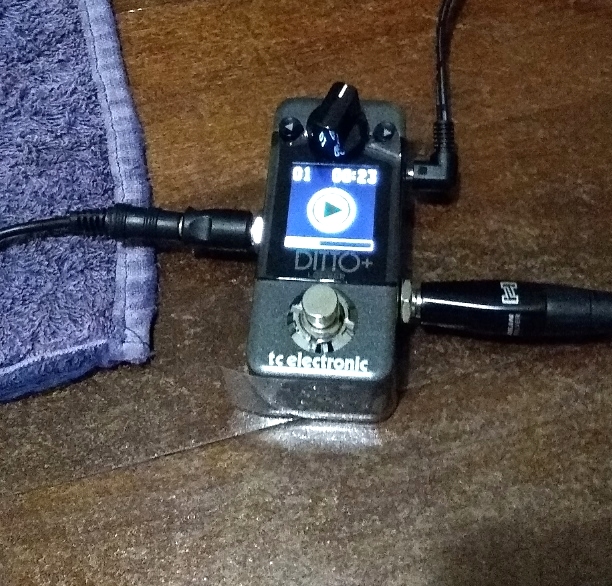Furthering my home studio resources, I did a whole bunch of research regarding DAW components. A Digital Audio Workstation is something I have sort of messed around the peripherals of, producing audio on my laptop for decades, but hardware was limited to a good stereo microphone and mini-disk recorder.
After much research I determined I needed 2 channels input, 2 out, and wanted something that would essentially extend my laptop “soundcard” given nearly every laptop has a poor excuse for a soundcard that pretends to be more than it is – this is annoying. For example, although it provides a single 3.5mm STEREO plug out, there is no plug for an INPUT. I (foolishly) bought a USB C “SoundBlaster” external “soundcard” only to discover that it’s INPUT only captures MONO, even though the packaging and advertising material says different.
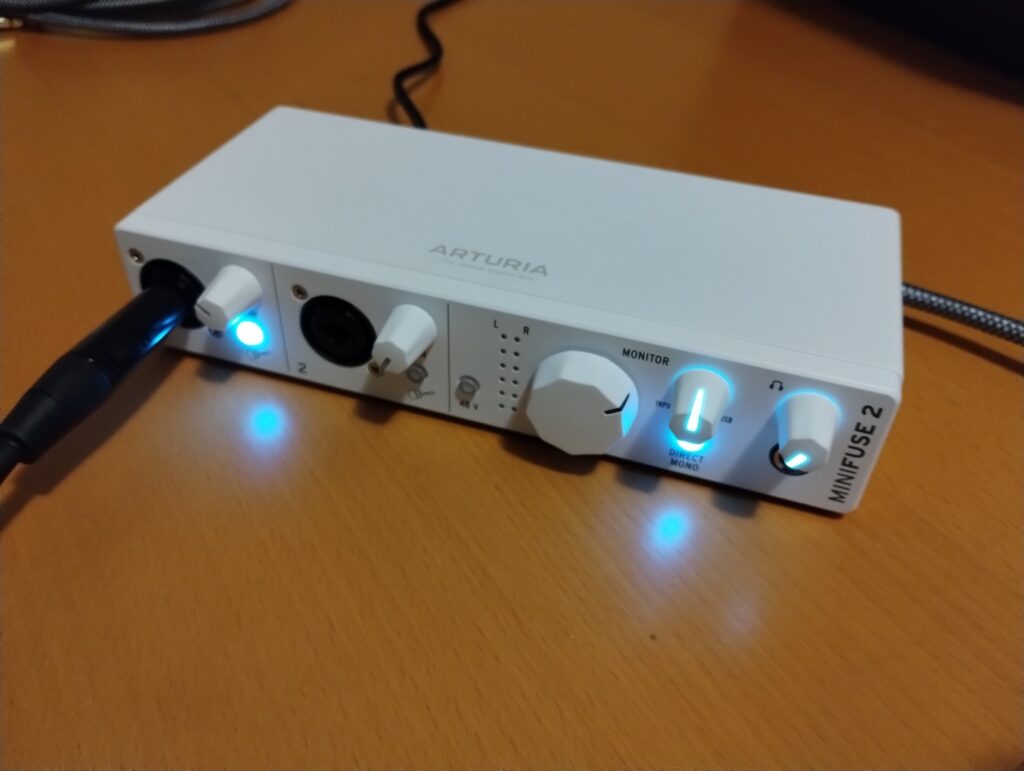
The soundblaster thingy is however useful for Zoom meetings etc as I can plug my wired headset into it and nicely separate microphone from speakers, but as a music capture device it is useless. I was using my wife’s gaming PC soundcard to capture samples form my MiniDisk as stereo digital files to use on my laptop – a clearly ludicrous and inconvenient solution.
When I was forced to buy my own laptop (as I recently retired and no longer have a school-provided laptop), I could not find a cost-effective solution built in to a laptop so looked for other options.
I settled on an Arturia MiniFuse 2 (2-in, 2-out), a lovely little USB C thingy that gives me external mixing capacity, allowing me to plug in both Theremins, or a Theremin and another device. When plugged in to my laptop it becomes the soundcard, and with it came some wonderful software to manage the DAW – including Ableton Live and the Arturia suite which I am learning to drive.
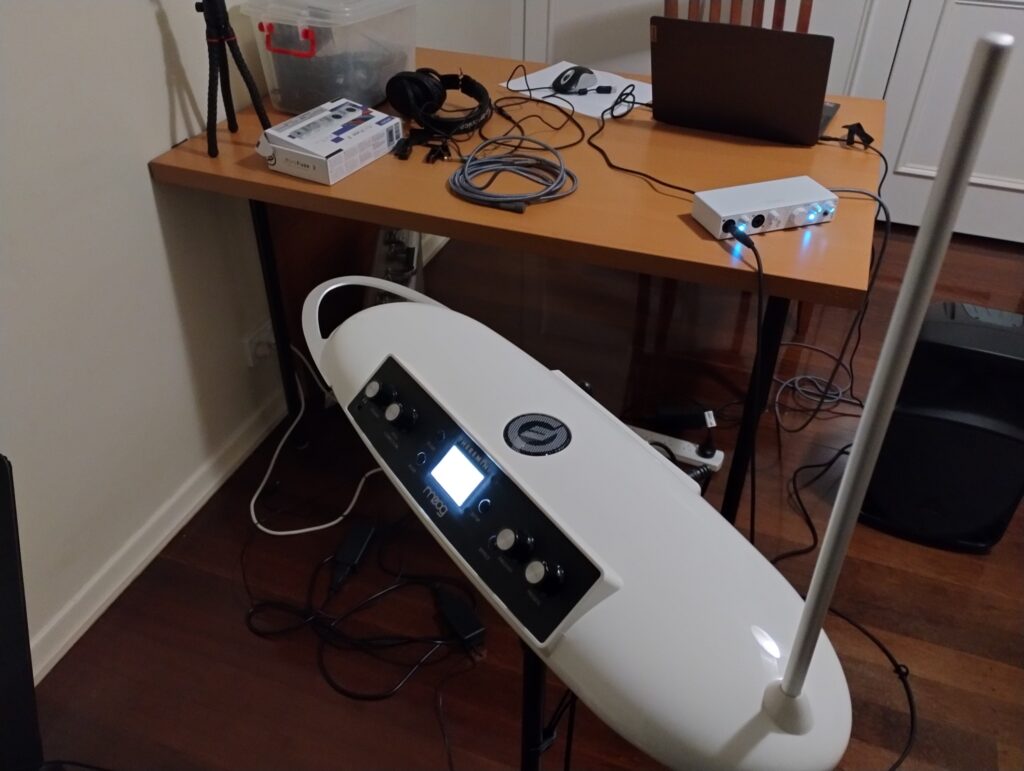
I also decided I needed some new cables, I had 2 “guitar leads” but needed more to connect things, integrate my loop pedal and also connect to the speaker, so bought some new TRS cables, and a quality Audio adapter to manage the 3.5 to 6.35mm plug issue. I also purchased a Music stand (for my iPad, which provides sound editors for both Claravox and Theremini), along with a quality USB C connector cable for the Vox.
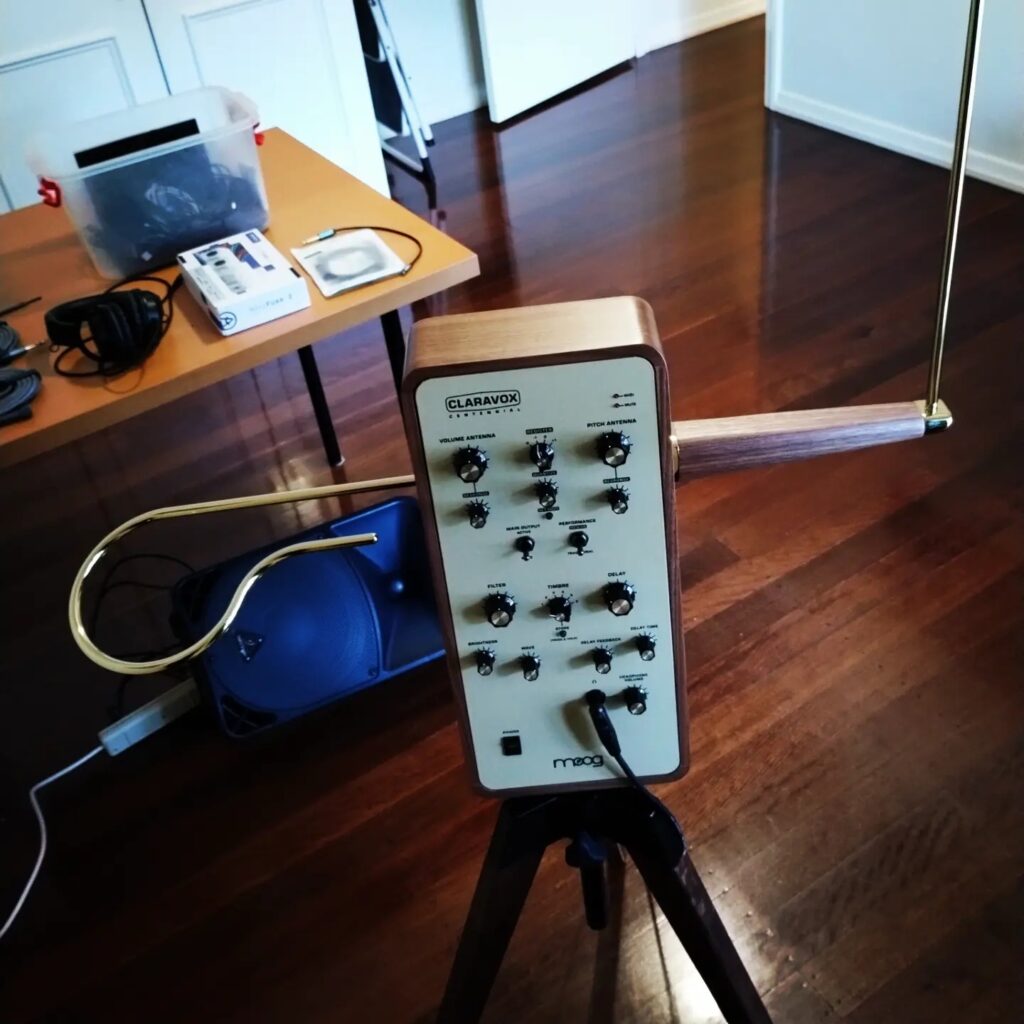
Along the way I also decided that the microphone stand the Claravox was using (bought previously for the Theremini) was too high to play comfortably, so I bit the bullet and bought the stand designed for the Claravox (a beautiful art object in itself) – completing my Clara, finally.
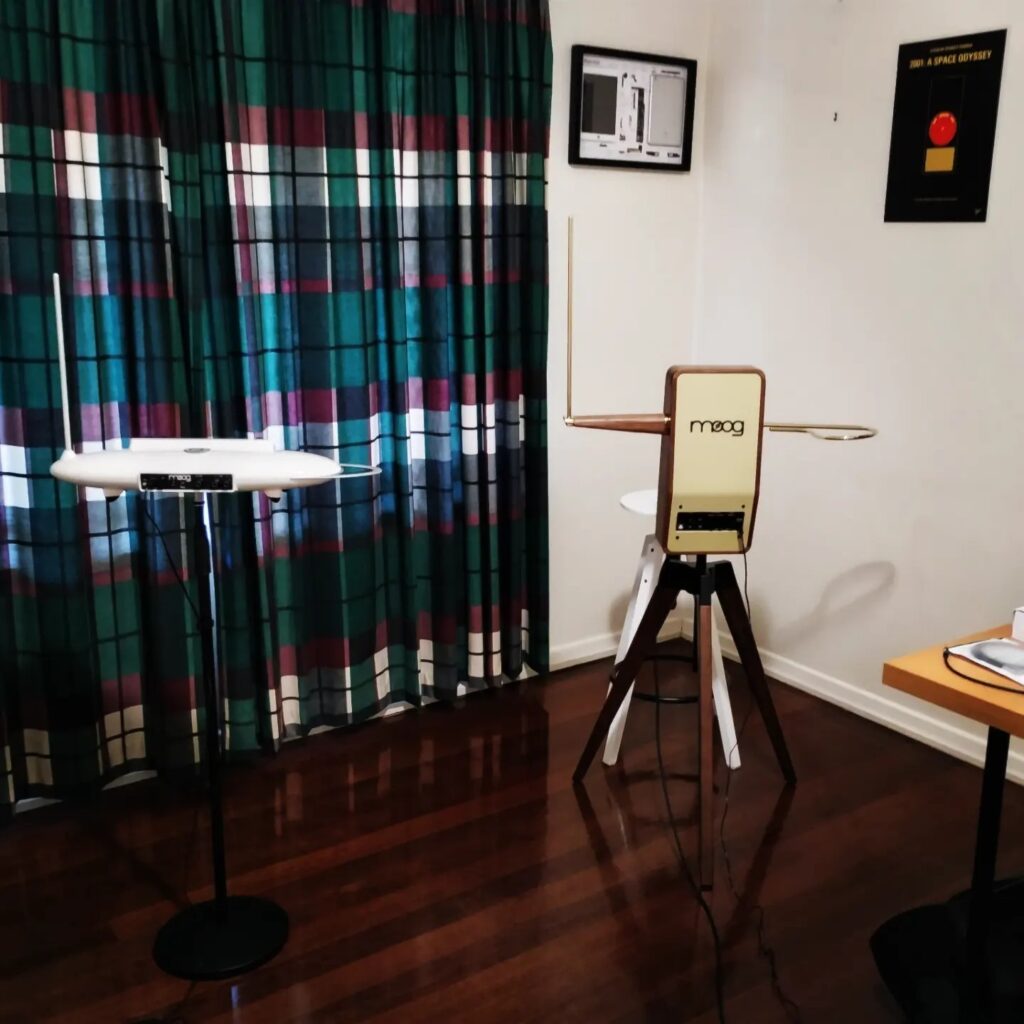
I … think … I now have all the bits I need to support what I want to do. We shall see.
